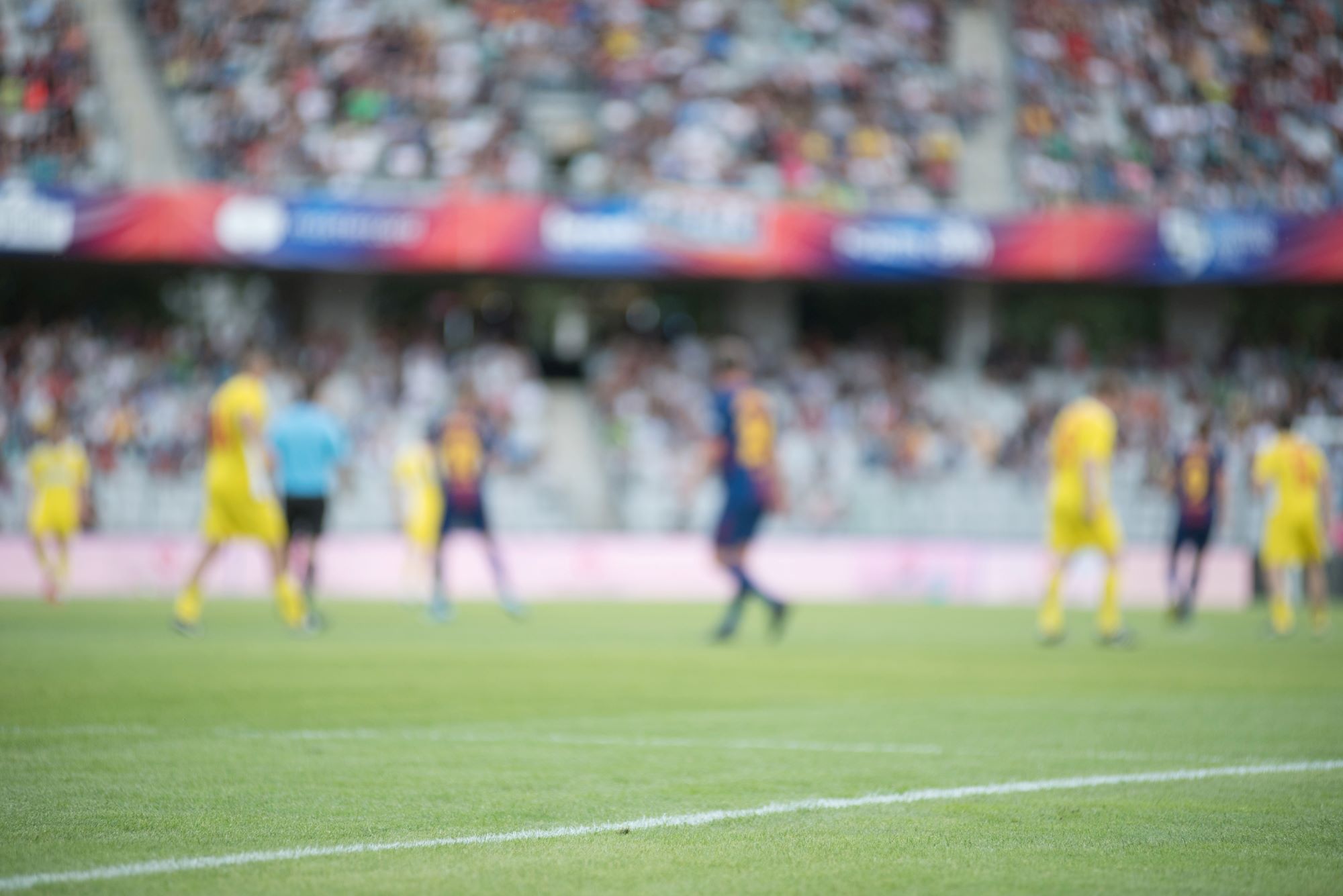Who is Charles Reep?
Who is Charles Reep?
Who invented football? Well, the game of football has existed, in various formats, for millennia. Formalised as a professional sport in 1863, the game swept across the globe in the following years.
Inevitably, as the game garnered an ever growing army of enthusiastic players and avid followers, the desire to deconstruct games, compare sides and comment on player performance grew too.
Today, data analysis forms the backbone of footballing commentary. It is relied on by professional pundits and everyday spectators alike – facts and figures are accessible in an instant and can be used to prove or disprove opinions in footballing debates. Finding the answers to pressing questions now merely a click away – but it’s not always been that way.
Nearly a century ago, the concept of football data analysis was a vision of one man. His name was Thorold Charles Reep and he is regarded as England’s first football tactical statistician.
Regarded by some as ‘The Human Computer of the Fabled Fifties,’ and others as the ‘archangel of a fanatical credo, a pseudo-religion,’ Reep’s techniques tend to inspire strong reactions. Some regard him as a footballing fanatic whose focus on the ‘long-ball game’ sabotaged the game, others argue Reep’s analysis created the more efficient and attacking style of play we see today.
One thing that can’t be denied though is Charles Reep’s significance and impact on the world of football analytics.
Thorold Charles Reep was born in Cornwall in 1904. Growing up he was an enthusiastic footballer who followed Plymouth Argyle. In 1928 Reep joined the RAF and was transferred to the Henlow base in Bedfordshire to undergo training. Unable to return to Home Park to watch his beloved Plymouth Argyle team play, he opted to watch Arsenal instead.
Arsenal were on a footballing high at the time and their captain Charles Jones visited the RAF base to present three lectures on footballing tactics instigated by Arsenal’s manager, Herbert Chapman. Reep attended all three presentations; it was here that his passion for data analysis was piqued. He began to experiment with making analytical match notations – the first of these titled, ‘Tactic Crime Chart.’
In 1936, Reep was posted to Iraq. Distance did not dampen his enthusiasm for the game or his interest in analysing it. Leading the RAF team at the base he avidly began to implement many of the tactics he had learnt from listening to Charles Jones. The results of his team spoke for themselves and Reep’s keen observational eye and penchant for obsessively scrutinising every kick of the game helped make his team a success. Then came the outbreak of the second world war and football was put on hold.
Once peace had returned to the world, Reep was stationed back in the UK, at RAF Yatesbury in Wiltshire. His reputation as an analytical trail-blazer preceded him and he was appointed as head of football at the base. He managed an eminent team with several players being taken on by league clubs. Reep employed a strategic planning system called ‘Loose Balls in the Goalmouth,’ and his players were tightly drilled around the practice of seeking out tap-ins and this format proved highly successful.
At the time, these conclusions were revolutionary and attracted attention from professional managers in the English game. Reep’s ability to rationalise the science of the game had begun to get him noticed in the higher echelons.
After being posted to RAF Bridgnorth in 1951, Reep found himself targeted by Brentford’s manager, Jackie Gibbons. A struggling side left the manager vulnerable and desperate for help, he reached out to Reep. They adopted Reep’s strategic approach and almost instantaneously they saw a change in results. They won nine of their last 13 matches having only won 9 out of 29 before Reep’s involvement.
Not long after he was contacted by Wolverhampton Wonderer’s manager, Stan Cullis. Hoping to capitalise on recent successes, he employed Reep’s ‘Loose Balls in the Goalmouth,’ tactics and the team went on to score 25 goals in the following seven games.
Immersed in the collection and scrutinisation of data, Reep would collect more than 2,000 shorthand symbols per match. Working in a forensic and frenetic state, he would meticulously produce sheets and sheets of handwriting conclusions after each game that were used to plan out strategies for following games.
Wolverhampton Wanderers were league champions in both 1958 and 1959, and in another pioneering moment, Charles Reep was publicly credited as an influential factor in the success of the team by Cullis at a civic banquet for the team. In that moment Reep achieved something never done before – a data analyst rated as one of the driving forces behind match wins.
In 1955 he left his post as Wing Commander and took up his first formal, paid position at Hillsborough. He remained there for two seasons and was credited with being an influential force behind the team securing in excess of 100 goals.
Reep moved between several other clubs over the next three decades. Coventry, Stoke, Chesterfield and Cambridge all became home for Reep. And, whilst his success rate was still admirable, his peak had waned slightly.
In the late 1990’s, Reep was approached by the Norwegian national side. Their manager Egil Olsen was also a keen data analyst and had admired the work of Reep for many years. Together they discussed strategies for more than five hours. Olsen employed Reep’s tactics and the Norwegian’s beat England 2-0 and Reep was watching the game as Norway’s guest of honour. Reep’s strategy of direct, offensive football led to England’s downfall and he was once again vindicated.
Thorald Charles Reep died at the age of 97, in 2002, just as technology and data analysis exploded across the footballing landscape. For some he was a groundbreaker who recognised that analysing both your own and your opponents state of play could impact on your ability to win – and for others he was scorned as an out-dated pencil and paper magician with no real stronghold on the game.
Innovations in Football Analysis
The 1950’s brought with it a plethora of change. Post-war Britain was still in the ferocious grip of rationing and austerity. Football allowed for passionate engagement not always found elsewhere and facilitated much needed entertainment. Crowd sizes swelled and football started to take on the shape we recognise today.
Reep’s motivation was always about the game and finding ways to claw efficient wins each week. He worked on the basic premise of – how can you score the most goals and what can you do to ensure that you meet the first objective?
He came to the conclusion that teams needed, on average, to score three goals per match to allow them to finish the league in a prime position. He then focussed on possession and how much time on the ball a team needed, how many shots were needed to create a goal and where the prime places shots should be taken from.
Some of his notable conclusions include:
- On average, no matter the standard of football being played, it took an average of nine shots before a goal was scored
- seven out of nine goals were scored with three passes are fewer
- a long pass from your own half was two times more successful than short passes from your own half
- the majority of goals were scored when the ball was won back in the attacking quarter of the pitch.
Reep’s vision was pioneering and he used data analysis to prove it. Efficiency and simplicity – the driving force behind wins. And, the data backed him up. Where teams employed his tactics there would be reversal of fortunes or success built on.
In its hey-day, during the 1950’s this tactic saw instant, notable results. And Reep vehemently argued that the long-ball strategy was not about incorporating a directionless state-of-play but encouraging attackers and wingers to make the most of every and any opportunity that came their way. The concept of getting the ball as close to your opponents goal allowed for threatening play and the possibility of scoring whilst reducing the possibility of losing the ball.
The FA started to collect data during the fifties but didn’t really understand how these statistics could influence or move the game forward. Charles Reep did. By the end of the 1950’s the FA would have up to ten data analysts tracking the game, their understanding secured by thinking like Reep had done more than a decade earlier.
Yet, as is often the case, what makes the man, breaks the man too. Reeps apparent dedication to playing the long-ball ultimately became regarded as a ploy to simply ‘hoof’ the ball and was disregarded by many. And, in the 1980’s the style of play changed and Reep tactics appeared to fall out of favour.
Neil Lanham, one of Reep’s analysts pointed out, “Charles Reep invented a method of telling you the truth of what happens on the field of play, of recording what actually takes place. He didn’t invent any system of play. He told you what happened and people didn’t like it – so they wanted to shoot the messenger.”
Legacy and Impact
Reep was no fool and he understood that he riled some sophisticats in the footballing community. He was also aware that academics had attempted to prove his modelling was tainted and discredit his findings.
At the time, Reep’s data analysts (with no input from Reep) were working with two English league managers, Graham Taylor and Dave Bassett. The analysts used Reep’s method of note-taking and both teams were successful – perhaps the perfect rebuttal to the critics.
After working with football clubs, Reep spent his time writing for publications, discussing the game and considering different styles of play. He wrote for newspapers and a footballing magazine called The Punter.
Data now consumes the game of football, it’s an ever present, multi million pound part of the game. Within the last decade the development of data analytics within football has been phenomenal. Owners like FSG at Liverpool have seen the potential of a data driven approach and developed an impressive team of data scientists to improve performance across the clubs.
Over recent years companies including StatsBomb have developed their data products that are now used worldwide, also supporting and providing specific data for Women’s Football and looking to provide more tools for analysts to use.
Data is now used worldwide with leagues and clubs using data extensively. Clubs around the world are now using data extensively with data companies now working with clubs in Ligue 1, Serie A, MLS and many more.
As Artificial Intelligence technologies continue to develop, data analysts are now looking to see how AI, Machine Learning and Data can also help to provide the competitive advantage that was started several years ago.
Yet for many people, it started with one man, a notebook and a set of symbols to help recount each kick of the ball. A romantic story maybe, a footballing genius certainly. An underrated hero – you decide.
Related Courses:
Share this article
Our Learning Pathways
AnalyiSport is for everyone who is passionate about analysis in football. Where are you in your development journey?
Become a Football Scout
As more clubs than ever look to build data into their recruitment process, an understanding of recruitment analysis is your ticket to success in the game.
Related Articles
Our team provides news and insights from the cutting edge of football analysis.







